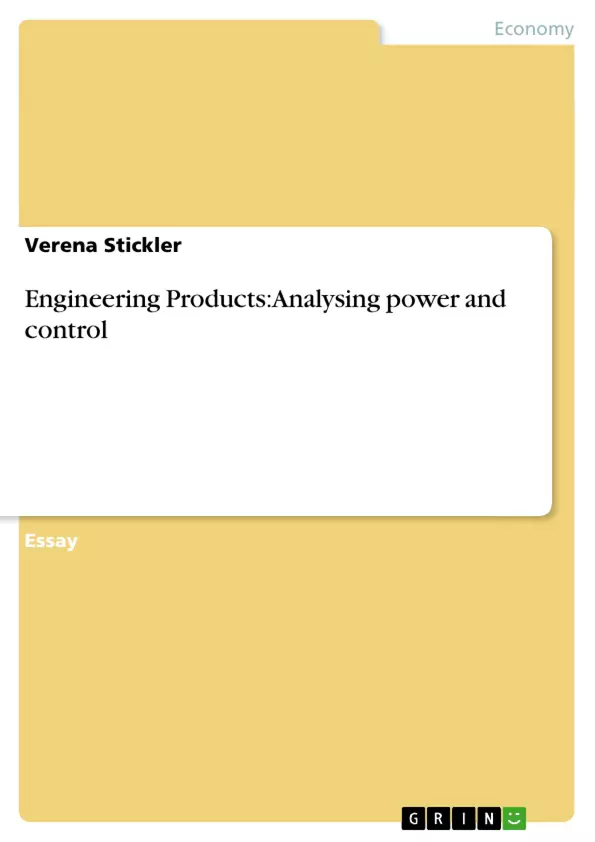This essay analyzes how power and control operate at Engineering Products following organizational change. It also critically looks at the implications of this on its managers and employees. The essay argues that it is only a matter of time before managers and employees’ motivation and performance begin to wither and deteriorate due to the firm’s mismanagement of change, power and control.
Inhaltsverzeichnis (Table of Contents)
- The Standardisation of Production across Borders
- Decisions are made at the centre about sourcing to supply different customers
- Implications for Managers and Employees
Zielsetzung und Themenschwerpunkte (Objectives and Key Themes)
This case study analyzes the restructuring and international integration of Engineering Products, a British engineering firm, focusing on its automotive components division. The study examines the impact of customer pressure for standardization on the company's international operations, management structures, and workforce.
- International integration driven by customer demands for standardized production.
- The role of management structures in facilitating the exchange of best practices.
- The impact of internal competition on plant-level autonomy and integration.
- Implications of international integration for managers and employees (e.g., increased mobility, reduced autonomy, job security).
- Balancing standardization with local adaptation in personnel practices.
Zusammenfassung der Kapitel (Chapter Summaries)
Chapter 1: The Standardisation of Production across Borders details how Engineering Products' automotive division responded to customer pressure for standardized production by creating international management structures like manufacturing councils and an International College of Engineering. The creation of an international cadre of managers and internal consultants further facilitated the sharing of best practices.
Chapter 2: Decisions are made at the centre about sourcing to supply different customers focuses on the role of internal competition in driving international integration. The HQ's ability to allocate orders based on plant performance incentivized the adoption of best practices and ensured compliance with HQ directives. The implementation of performance-related pay (PRP), while standardized across plants, allowed for local variations reflecting negotiations with management and worker representatives.
Chapter 3: Implications for Managers and Employees examines the effects of international integration on managers and employees. Managers experienced increased geographical mobility and reduced autonomy. Employees faced increased competition between plants, potentially impacting job security, and were exposed to working practices developed in other countries. The adoption of cellular assembly in one plant, driven by its high productivity, illustrates this diffusion of best practices and its impact on the workforce.
Schlüsselwörter (Keywords)
International integration, standardization, multinational corporations (MNCs), automotive industry, management structures, internal competition, best practices, performance-related pay (PRP), job security, geographical mobility, cellular assembly, employee representation, decentralization, power and control.
- Quote paper
- BA Verena Stickler (Author), 2008, Engineering Products: Analysing power and control, Munich, GRIN Verlag, https://www.grin.com/document/187392



